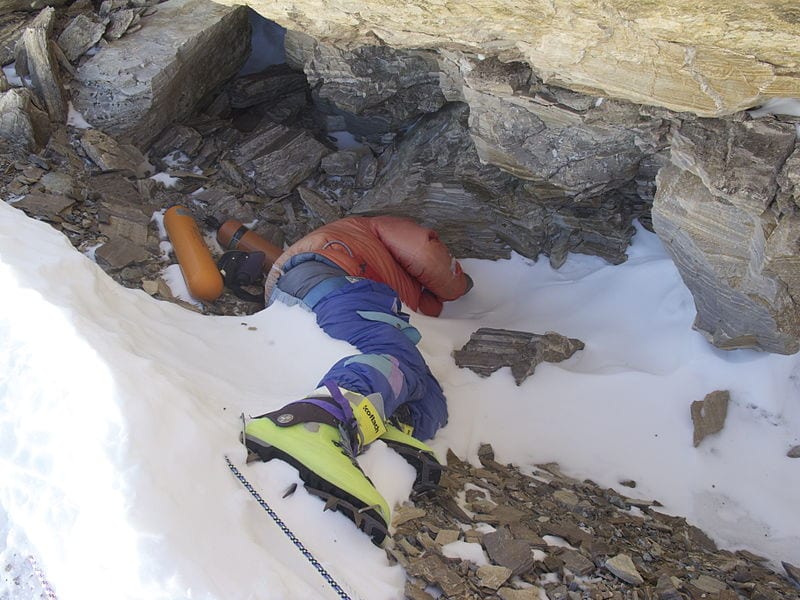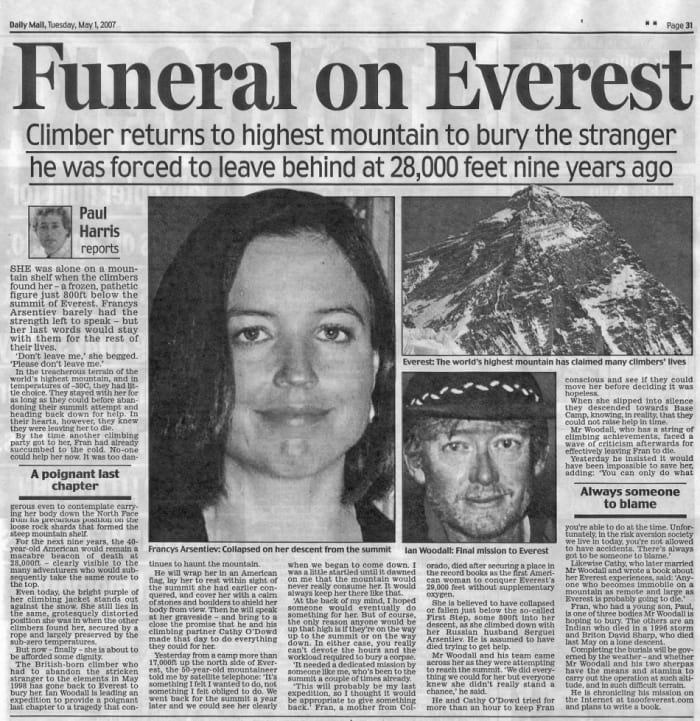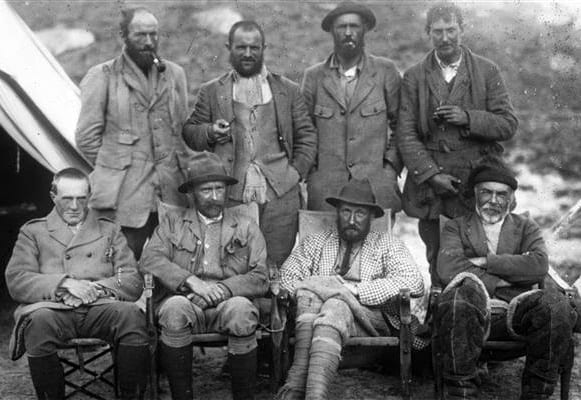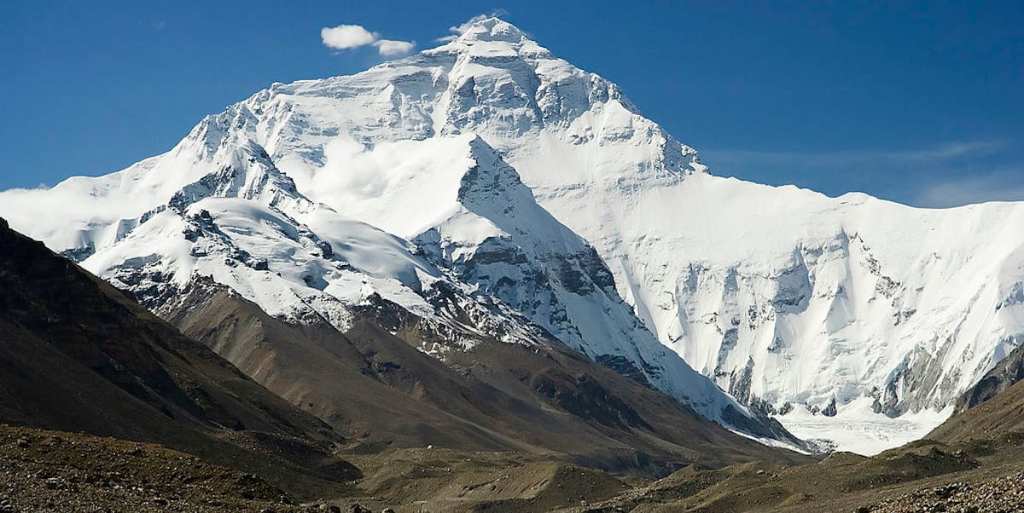Okay, so I’ve known for a while that a good number of the people who attempt to climb Mount Everest never return. But knowing that fact and actually hearing the stories of how these people perished or seeing images of their frozen bodies still stiff where they fell in the snow are two different things.
Honestly, when I began researching for this article I was not prepared for macabre horror of what awaits climbers on the face of that mountain.
Which is to say, if you’re going to read on and learn about a few of the people who went up but never came down, take a moment to mentally suit up. You’ll thank me later.
Here’s what shocked me the most: you could have an accident or become disoriented on your way to or from the summit and still be alive when people find you…but be “too far gone” to save. So basically, your partners and crew and sherpa or whoever make the decision to save themselves and leave you to freeze to death alone.
I know. It’s awful, but I guess…what’s the other option? Everyone dies?
Once you get into the “death zone,” you body is basically on life support until you reach the summit and then get back down to a safe(r) base camp. If you somehow become incapacitated in that zone? The chance that anyone is going to be able to help you when they’re using all of their strength and resources to not die themselves is pretty small.
And I get it. But that doesn’t make any of these stories less sad.
Green Boots is probably the most famous of these fallen bodies, seen by every climber who takes the Northwest Ridge route to the summit. Though we don’t know for sure, it’s believed to be the body of Indian climber Tsewang Paljor. He, along with two of his teammates, were last seen by a group of Japanese climbers on their way to the summit in 1996, but even though the rest of their crew believed they saw the men’s headlamps descending later that evening, the three (including Paljor) who attempted to press on were never seen nor heard from again.

Photo Credit: Wikimedia Commons
Francys Arsentiev was climbing with her husband Sergei, and, in 1998, she became the first American woman to reach the top of Mount Everest without supplemental oxygen. The two became separated on their way back down to base camp, and Sergei arrived to learn that his wife had not returned. He set out to find her, passing some Uzbek climbers who had helped Francys down the mountain until they’d been forced by dwindling oxygen to continue on without her. When neither Sergei nor Francys had returned by the morning, climbers Ian Woodall and Cathy O’Dowd set out to see whether they could help (I’m sure doubtfully). They were shocked to find Francys still alive, though it didn’t take long for them to realize that between her wobbling consciousness and inability to move that they had arrived to late to save her.
They were forced to leave, though Woodall returned in 2007 in order to drag Francys’s body out of sight and cover it with an American flag. Her husband Sergei fell to his death trying to reach her that night.

Photo Credit: Daily Mail
In 2006, David Sharp made it to the summit without supplemental oxygen, but he became disoriented and exhausted on his way back and sat down in a small cave to try and recover. Though up to 40 people passed his huddled form, no one stopped to check on him until late on the 15th, and the time for helping him had passed.
The attitude of many climbers seems to be that reaching the summit is the priority, regardless of whether people need help on the way there. The ultimate thrill comes part and parcel with the ultimate price, for many, and it seems as if the people who attempt it must find a way to make their peace with that fact before they pack their bags and head up.

Photo Credit: YouTube
And one last body – one that rested for 75 years on Mount Everest before being discovered in 1999 – that belongs to early adventurer George Mallory. He and his climbing partner Sandy Irvine might well have been the first people to ever reach the top alive. Which is even more impressive when you think about the fact that they did it back in 1924, without the advanced equipment used by the vast majority of adventurers today.
I say might well have been because Mallory and Irvine never made it back to relay their success (or failure). They were last spotted just a few hundred vertical yards from the top and moving strongly, but no one actually saw them reach it.

Mallory: Rear, Far Right
Photo Credit: Wikimedia Commons
He did carry a picture of his wife that he intended to leave atop the mountain, and it wasn’t found in his wallet when they (finally) stumbled across his body. So perhaps they were the first men to make it to the top, after all.
After reading this article, you’re probably wondering why in tarnation a person would ever want to attempt a run at the peak, passing the frozen corpses of the people who didn’t make it along the way. I’m not sure there’s anything that could convince me to strap on my boots and climbing gear (if I owned any), but according to George Mallory, he did it “because it’s there.”
Which, when you think about it, is as good a reason as any.
h/t: MPora
We know you can choose a lot of sites to read, but we want you to know that we’re thankful you chose Did You Know. You rock! Thanks for reading!






